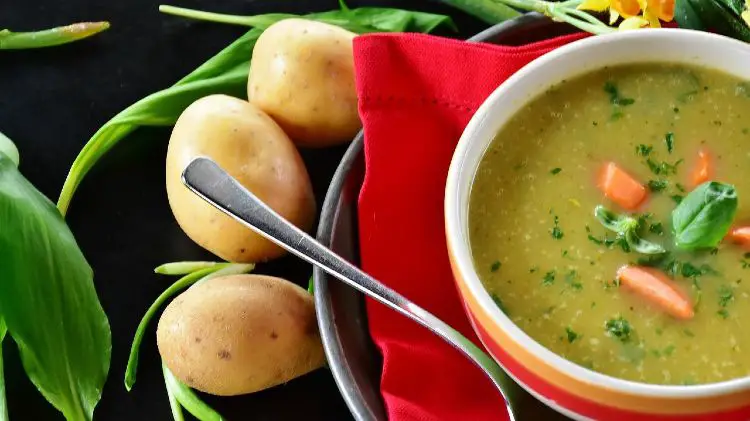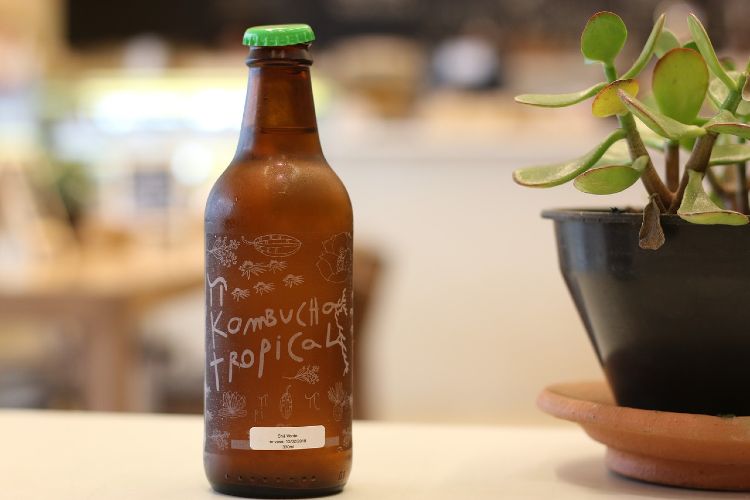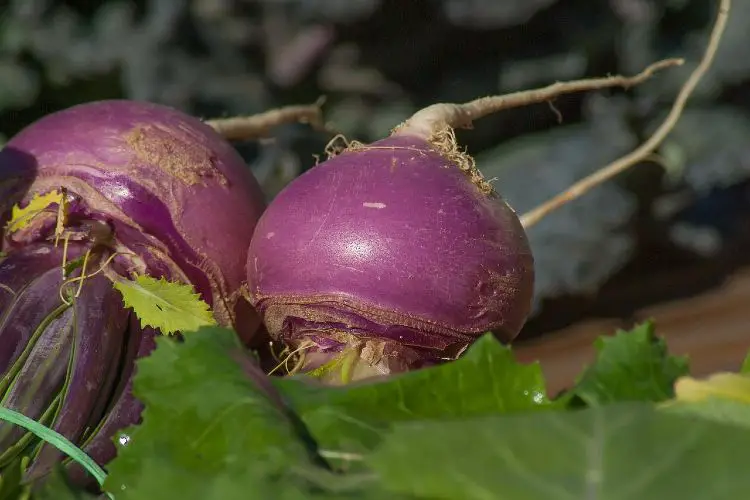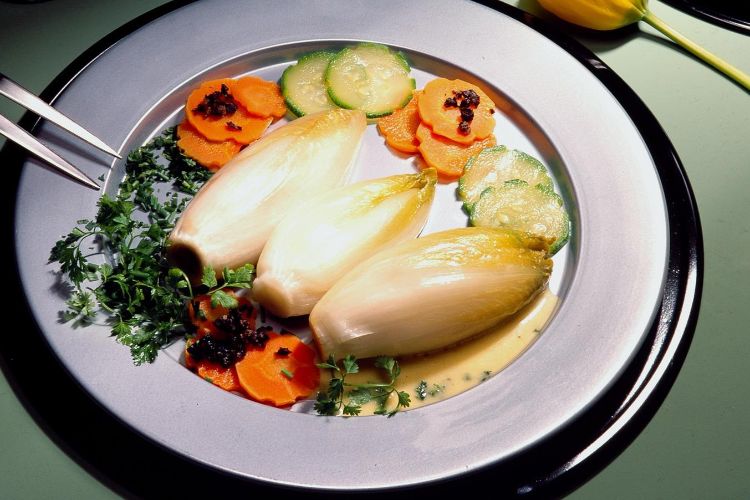What Does Quince Taste Like?
Quick Answer
The taste of quince is often described as a cross between an apple and a pear, but with additional tart and floral notes. Raw quince is quite astringent and almost inedible due to its high tannin content. However, when cooked, it transforms into a sweet, aromatic fruit with a somewhat tropical or perfumed flavor.
What Is Quince?
Quince is a deciduous fruit tree in the Rosaceae family, which also includes apples and pears.
The fruit it bears is yellow and somewhat pear-shaped but larger and more irregular in form.
Raw quince is very astringent and almost inedible due to high levels of tannins, but when cooked, it becomes sweet, aromatic, and takes on a rosy hue.
It is commonly used in jellies, jams, pastes, and various cooked dishes.
What Does Quince Taste Like?
Raw Quince: Almost Inedible
If you’ve ever tried to bite into a raw quince, you’ve likely encountered its extreme astringency. This mouth-puckering experience is far from the sweet, crisp sensation you’d get from an apple or pear.
Because of its astringent nature, raw quince is almost never consumed as-is. Its tough texture and sour taste make it unpalatable, relegating the fruit mostly to cooked preparations where its true flavors can be coaxed out.
Cooked Quince: A Flavor Transformation
Cooking quince fundamentally alters its texture and flavor. The flesh softens, the astringency dissipates, and the tartness mellows, transforming the fruit into something sweet, aromatic, and quite delectable.
The Rosy Hue It Takes On When Cooked
One of the magical aspects of cooking quince is how it changes color. As it cooks, the pale yellow flesh deepens into a beautiful rosy or even ruby hue, enhancing its visual appeal in dishes.
Comparison to Other Fruits
Quince is often compared to apples and pears, which makes sense given that they all belong to the Rosaceae family. However, while apples and pears can be sweet and crisp when raw, quince is usually tart and astringent, requiring cooking to reveal its true flavor.
What Is The Texture Of Quince Like?
The texture of quince varies depending on its state – raw or cooked.
Raw Quince
In its raw form, quince has a very hard, woody texture, akin to that of a raw potato or an unripe pear. It is extremely firm and difficult to cut or bite into. The flesh is dense and not juicy, contributing to its general astringency and the reason it is rarely eaten raw.
Cooked Quince
When cooked, the texture of quince undergoes a significant transformation. It becomes much softer and loses its astringency. Depending on the cooking method and duration, it can range from a tender, apple-sauce-like consistency to a firmer, more pear-like texture.
The flesh becomes easier to cut or mash, making it versatile for various culinary applications, from jams and jellies to stews and baked dishes.
FAQs
What Does Raw Quince Taste Like?
Raw quince is extremely astringent and tart, almost to the point of being inedible. It has a hard, woody texture and a flavor profile that is generally not pleasing when consumed raw.
Why Is Raw Quince So Astringent?
The astringency in raw quince is due to its high content of tannins. These polyphenolic compounds interact with proteins, such as those in your saliva, creating a dry, puckering sensation in your mouth.
How Does The Taste Of Quince Change When Cooked?
When cooked, quince undergoes a significant transformation in both texture and taste. It becomes softer, sweeter, and more aromatic, losing much of its astringency. The fruit may also take on a rosy or ruby hue, depending on the cooking method.
Is The Taste Of Quince Similar To Any Other Fruits?
The taste of cooked quince is often described as a cross between a pear and an apple, but with additional notes that are floral, sweet, and sometimes even “tropical” or “perfumed.”
What Are Common Dishes That Use Quince?
Quince is commonly used in jellies, jams, and pastes like membrillo. It is also found in various cooked dishes, including stews, tagines, and desserts like pies and tarts.
What Spices Pair Well With Quince?
Quince pairs exceptionally well with spices like cinnamon, star anise, and vanilla. These spices help to accentuate the fruit’s natural sweetness and aromatic qualities.
Can You Eat The Skin Of Quince?
While the skin of quince is technically edible, it is usually peeled because it contributes to the fruit’s astringency. However, if you do choose to eat it, make sure to wash it thoroughly, as it can sometimes have a fuzzy coating similar to that of a peach.
How Do You Prepare Quince For Cooking?
Due to its hard texture, quince requires a sharp knife and a steady hand for preparation. It’s commonly peeled, cored, and then cut into slices or chunks before cooking.
Can Quince Be Used In Both Sweet And Savory Dishes?
Yes, the unique flavor profile of quince makes it versatile enough to be used in both sweet and savory dishes. Its natural sweetness and aromatic qualities shine in desserts, while its tartness adds complexity to savory dishes.
Does Quince Taste Good?
The taste of quince is subjective and depends on how it’s prepared. In its raw form, quince is highly astringent and not generally considered tasty. However, once cooked, it transforms into a sweet, aromatic, and unique fruit that many people find delicious. Its flavor profile can be likened to a mix of apple and pear but with additional floral and sometimes “tropical” or “perfumed” notes.
What Does Quince Smell Like?
Quince has a distinct aroma that some describe as floral, citrusy, or even tropical. The smell is more pronounced in ripe fruit and is often likened to a sweeter, more aromatic version of an apple or pear. The fragrance of quince is one reason it was historically used to freshen the air in confined spaces.
What Does Quince Jam Taste Like?
Quince jam is a sweet, tart, and highly aromatic spread that captures the essence of the cooked fruit. The jam often takes on a rosy or ruby hue and has a rich, concentrated flavor that is both fruity and floral. It pairs exceptionally well with cheese, crusty bread, or even as a glaze for meats.
What Does Quince Gin Taste Like?
Quince gin typically infuses gin with the flavors of cooked quince, bringing in notes of sweetness, tartness, and floral aromatics. The resulting spirit is complex and nuanced, making it excellent for cocktails or even sipping neat. The gin may take on a slight rosy hue from the quince.
Is Quince Peel Edible?
Yes, quince peel is technically edible but is generally removed due to its contribution to the fruit’s astringency. If you do choose to eat it, wash the skin thoroughly to remove any fuzz or pesticides.
Can You Eat Raw Quince?
While you can physically eat raw quince, it is generally not advised due to its extreme astringency and tartness. The fruit is much more palatable and enjoyable when cooked, which transforms its texture and flavor profile.
Are Quince Seeds Poisonous?
Quince seeds contain a small amount of cyanogenic glycosides, substances that can release cyanide when ingested in large quantities. However, you would need to consume a very large number of seeds for it to be harmful. As a precaution, it’s best to avoid eating the seeds.
What Tastes Best With Quince?
Quince pairs well with a variety of foods and flavors. In sweet dishes, it complements spices like cinnamon, star anise, and vanilla. For savory dishes, it works well with meats like lamb or pork and can also be paired with strong cheeses. Its unique flavor profile makes it a versatile ingredient in both sweet and savory culinary applications.





